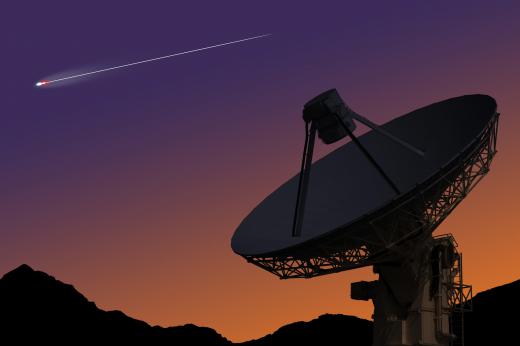What is Betelgeuse?
 Michael Anissimov
Michael Anissimov
Betelgeuse is a red supergiant star located 427 light-years away in the constellation of Orion. Betelgeuse, as the ninth brightest star in the night sky, is the "shoulder" of Orion. It is not located far in the night sky from Sirius, the brightest star. With a radius 630 times that of the Sun, Betelgeuse would extend to between the orbit of Mars and Jupiter if it were placed in the center of the solar system. Betelgeuse is one of the largest stars known.
As a red supergiant, Betelgeuse has consumed most of the hydrogen in its core, already having fused it into helium. Therefore, it gets most of its energy fusing helium into carbon through the triple-alpha process. Like other red supergiants, Betelgeuse has a large diameter — most red supergiants are between 200 and 800 solar diameters in size, although some as large as 1500 — and instead of having a distinct photosphere, just trails off into space. It is red because of its relatively low surface temperature, only 3,500K.

Betelgeuse has been noted by stargazers as early as the 1st century BC, when Chinese astronomers left notes on the star's color and luminosity. It is part of the Winter Triangle asterism, which includes the Sirius, Procyon, and Betelgeuse — three of ten of the brightest objects in the sky — as its vertices.
Betelgeuse has a very unusual name that is partly due to confusions in translation between Arabic and Latin. The star was originally called yad al-jawzā, or "hand of the central one" in Arabic. A confusion of the first letter led to it being translated into Latin as Bedalgeuze. Then, in an attempt to make it correspond with what was thought to be the original intention, it was thought that the original really was "armpit of the central one," pronounced Bait al-Jauza in Arabic, which led to the modern spelling as "Betelgeuse." So the modern word was only created after several mistakes and confused translations.
AS FEATURED ON:
AS FEATURED ON:












Discuss this Article
Post your comments